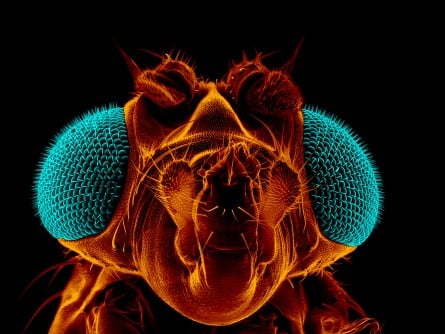BREAKING: Florida Atlantic University scientists have made a groundbreaking discovery about the protein “Frazzled,” revealing its critical role in the nervous system of fruit flies. This urgent finding, published in the journal eNeuro, highlights how Frazzled facilitates lightning-fast communication between neurons, essential for all nervous systems.
The research, led by Rodney Murphey, Ph.D., focuses on the Giant Fiber (GF) System of Drosophila, the fruit fly known for its rapid escape reflex. The study reveals that when Frazzled is absent or mutated, neuronal connections falter, leading to slower reflexes and weakened muscle control.
Researchers discovered that the absence of Frazzled disrupts the formation of gap junctions—tiny channels allowing direct neuron-to-neuron communication. Specifically, a protein called shaking-B (neural+16), crucial for these junctions, was found to be compromised, causing significant misfiring of neural signals.
Using advanced genetic tools, the team reintroduced fragments of the Frazzled protein into mutant flies. Remarkably, just the intracellular portion of Frazzled was sufficient to restore both the structure of synapses and neuronal communication speed. This indicates that the protein’s role in gene regulation is vital for creating functional gap junctions.
The researchers also developed a computational model of the GF System, confirming that even minor changes in gap junction density can significantly impact the reliability of neural signals. “The combination of experimental and computational work allowed us to see not just that Frazzled matters, but exactly how it shapes the connections that let neurons talk to each other,” Murphey stated.
Interestingly, while Frazzled has been recognized as a guidance molecule aiding neuron growth, this study uncovers its dual function in both wiring neurons and enhancing communication. Flies lacking Frazzled exhibited erratic neuron growth, failing to reach targets. Restoring the intracellular domain corrected these guidance errors, showcasing Frazzled’s comprehensive role in the nervous system.
The implications of this research extend beyond fruit flies, as similar proteins in other organisms may influence synapse formation. This could pave the way for insights into neural circuits in mammals and their roles in learning, memory, and potential recovery from injuries.
As the team prepares for further exploration of Frazzled’s mechanisms in other species, this study sheds light on foundational aspects of nervous system assembly. “Understanding how neurons form reliable connections is a central question in neuroscience,” Murphey noted, emphasizing the potential for future studies on neurodevelopment and repair strategies.
This urgent research could have far-reaching consequences for our understanding of neurodegenerative diseases and neural repair, making it a significant development in the field of neuroscience.
Stay tuned for more updates as researchers continue to investigate the complexities of neural circuits and the vital role of proteins like Frazzled.







